Chunky chains are given a subversive high jewellery spin
High jewellery houses rewrite the rules by way of 1980s tunes and a blast of emeralds, spinels and diamonds
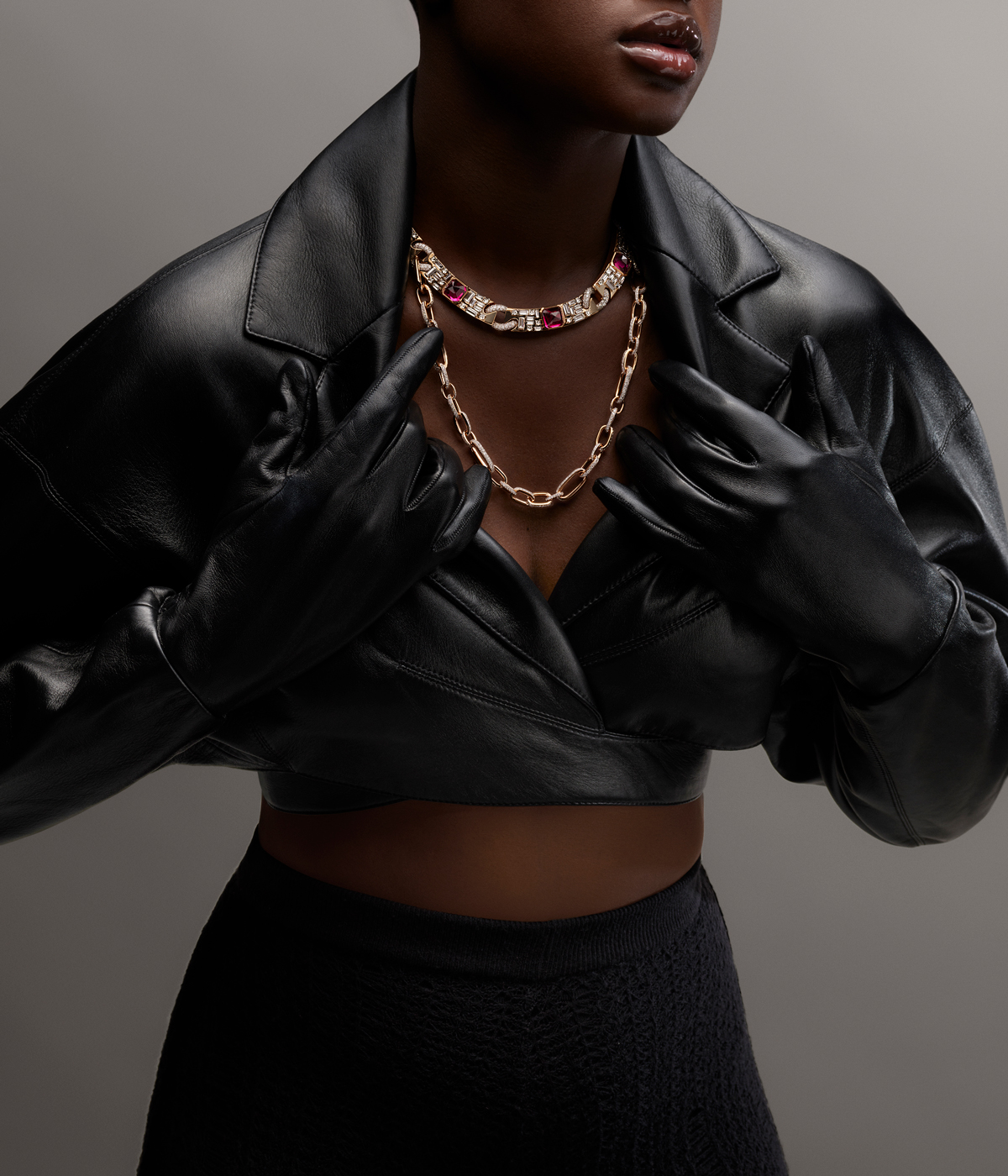
When chunky chains started dominating this year’s high jewellery collections, the electro-hop beats of Salt-N-Pepa’s 1987 hit Push It pumped around my brain for days. The musical connection also struck a chord with Ehssan Moazen, creative director of Chaumet, one of the oldest jewellery maisons on Paris’ Place Vendôme. ‘Our ‘Tulip’ necklace does have a hint of 1980s streetwear and a touch of punk to it,’ he says of the heavy diamond-set piece from this year’s Le Jardin de Chaumet collection.
Yet it’s rare for a jeweller whose business is seriously precious materials to create big, bold pieces that might be confused with street ‘bling’. After all, high jewellery is, by its very nature, designed to last. ‘Being recognised as a traditional house for our history, craftsmanship and the quality of our jewels is important – it’s in our DNA,’ says Moazen. ‘But it becomes a challenge if we only lean towards our past.’ As such, he sees the voluminous ‘Tulip’, with its off-centre 10.70ct Tanzanian red spinel, as Pomellato championed fashionable chains ‘the right inspiration to convey contrasting from the off, applying its fine, 18kt gold influences in a highly sophisticated way’.
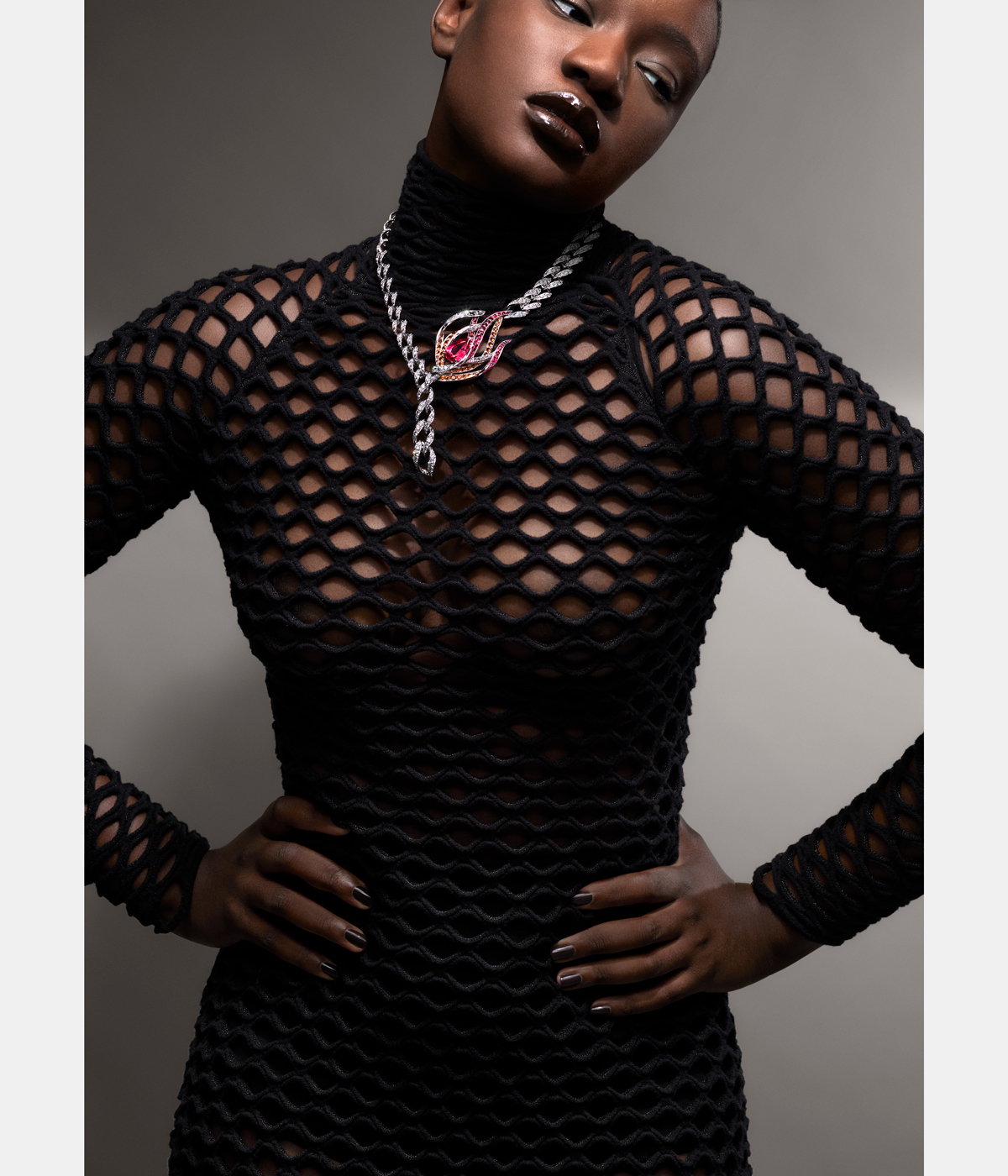
Tulip’ white gold necklace with 10.70ct spinel, red spinels, spessartite garnets and diamonds, price on request, by Chaumet. Dress, £2,300, by Alaïa
If there was ever a moment for the exclusive world of high jewellery to embrace broader cultural inspirations, that time is now. Global high jewellery sales boomed throughout the pandemic, with the-then-necessary direct-to-client video calls now seen as a highly effective norm for some brands. Recent surveys expect the market for highly precious designs to grow exponentially by 2025, as clients bask in the exclusivity of one-off creations and the rarity of earth-born gemstones. Then there’s the overriding influence of today’s music megastars who prefer real diamonds and pearls to the comic, overblown street versions of yore.
For Milanese jewellery house Pomellato, it has always been thus. The house is not new to fashion, nor the chain game. But it is a newcomer to the high jewellery arena. Established in the Italian city in 1967, Pomellato championed fashionable chains from the off, applying its fine, 18kt gold flavour to the symbolic pendant designs preferred by the hippie movement. The sounds of the times have also played their part. In 1960s music subcultures, a swinging pendant or two spoke of a subversive, sensual power, particularly for men. As Pomellato’s creative director, Vincenzo Castaldo, says: ‘Our dialogue with fashion always makes its way into chain design – it becomes more rock ‘n’ roll and openly seductive.’
The starting point for the high jewellery Castello chain, a sensational addition to Pomellato’s latest high jewellery collection ‘Ode to Milan’, was a 1970’s choker from the archives. “It had this neo-medieval look reminiscent of the dominating architecture of the Castello Sforzesco,” Castaldo says. “We were looking to find a link between Milan’s history and Pomellato’s heritage, so we took its essence of power and invincibility and added a softer contrast with the stones” – five rubellites and 28 carats of diamonds, to be precise.
So far, so classic, but the addition of velvety rubellites and the sheer inventiveness of the Castello design – diamond-set angular baguette cuts on rose-gold plaques, linked by chunky diamond-set gourmette links – shows how Pomellato has appropriated the house motif as a playground for serious high-jewellery techniques.
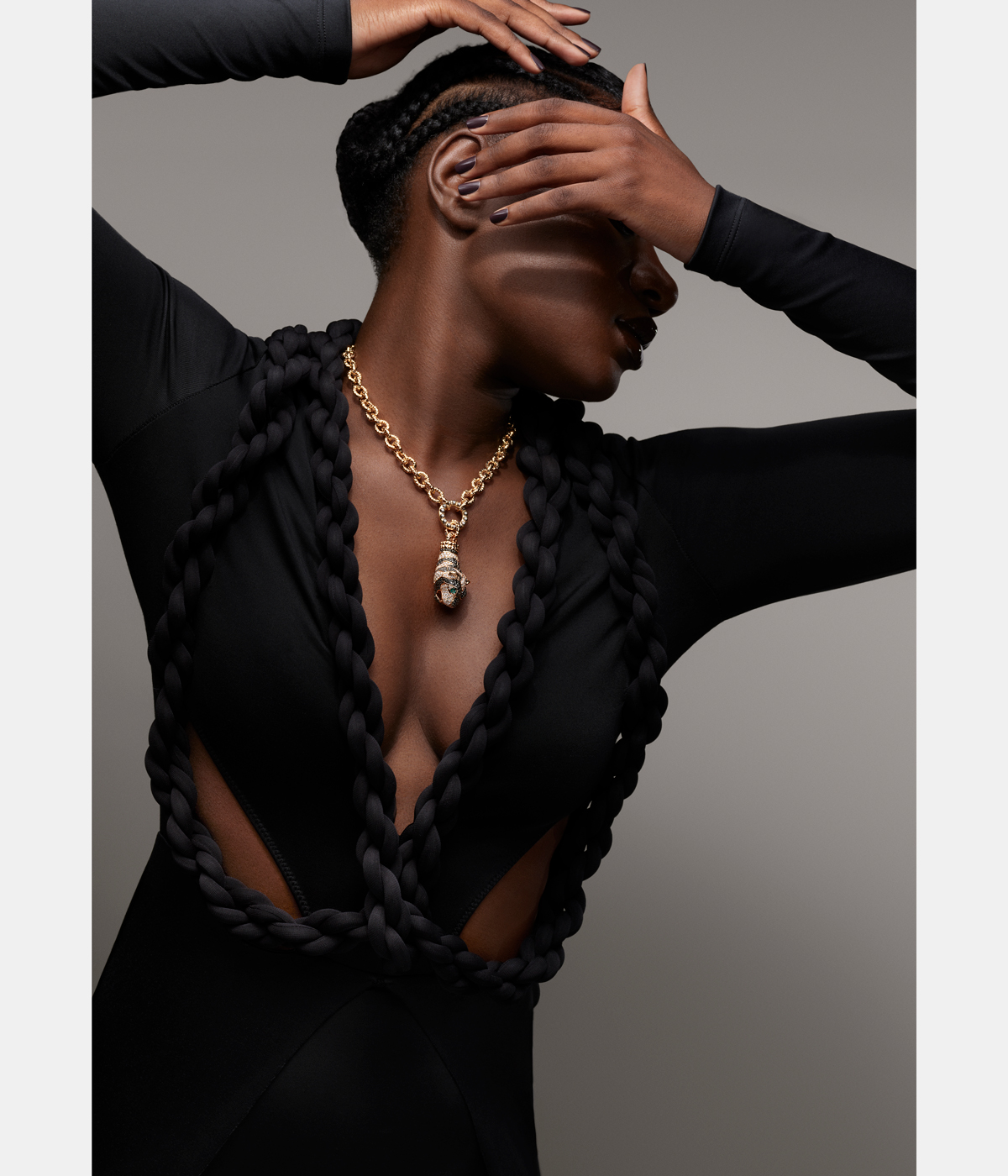
Tiger Head necklace in pink gold, emeralds, and black and white diamonds, price on request, by Gucci. Dress, £1,450, by Stella McCartney
The non-gender street appeal of chains was never lost on Alessandro Michele, Gucci’s former creative director, whose inventive high jewellery collections became quite pendant- focused. The emerald-eyed panther necklace wouldn’t have looked out of place on Neneh Cherry’s 1989 Raw Like Sushi album cover. The poppy hip-hop star stands defiant, dripping in urban-jeweller’s gold – pendant around neck, bangles stacked on wrist. “I was influenced by the idea of mixing the resilient and the classic, using urban street style with classic items,” Cherry told a newspaper at the time of the album’s re-release in 2020.
Receive our daily digest of inspiration, escapism and design stories from around the world direct to your inbox.
At Chaumet, Ehssan Moazen and his Paris team are also busy conflating the resilience of high-jewellery tradition with contemporary mores. The Tulipe design started as a chain, which, Loazen says, “simply became the extension of the abstracted tulip.” But there is a more philosophical bent to the story: “We liked the notion of a single concept coupled with an outstanding gemstone. Here, it is a feeling of ‘power’.”
The Chaumet Tulipe undoubtedly captures the style mood, but the high jewellery expression offers a level of sophistication and intricacy that, like any pop diva worth her gold-plated microphone, absolutely demands a double take.
A version of this story appears in the January 2024 Next Generation Issue of Wallpaper*, available in print, on the Wallpaper* app on Apple iOS, and to subscribers of Apple News +. Subscribe to Wallpaper* today!
Caragh McKay is a contributing editor at Wallpaper* and was watches & jewellery director at the magazine between 2011 and 2019. Caragh’s current remit is cross-cultural and her recent stories include the curious tale of how Muhammad Ali met his poetic match in Robert Burns and how a Martin Scorsese Martin film revived a forgotten Osage art.
-
 'Design at its most ambitious': meet the 2025 Royal Designers for Industry
'Design at its most ambitious': meet the 2025 Royal Designers for IndustryThe Royal Society for Arts announces the five new Royal Designers for Industry as well as two Honorary Royal Designers for Industry
-
 A new art museum brings colour, quirk and a celebration of creativity to Doha
A new art museum brings colour, quirk and a celebration of creativity to DohaLawh Wa Qalam: M. F. Husain Museum is awash with colour and character, courtesy of Indian architect Martand Khosla and the Qatar Foundation
-
 Out of office: The Wallpaper* editors’ picks of the week
Out of office: The Wallpaper* editors’ picks of the weekThis week, the Wallpaper* team had its finger on the pulse of architecture, interiors and fashion – while also scooping the latest on the Radiohead reunion and London’s buzziest pizza
-
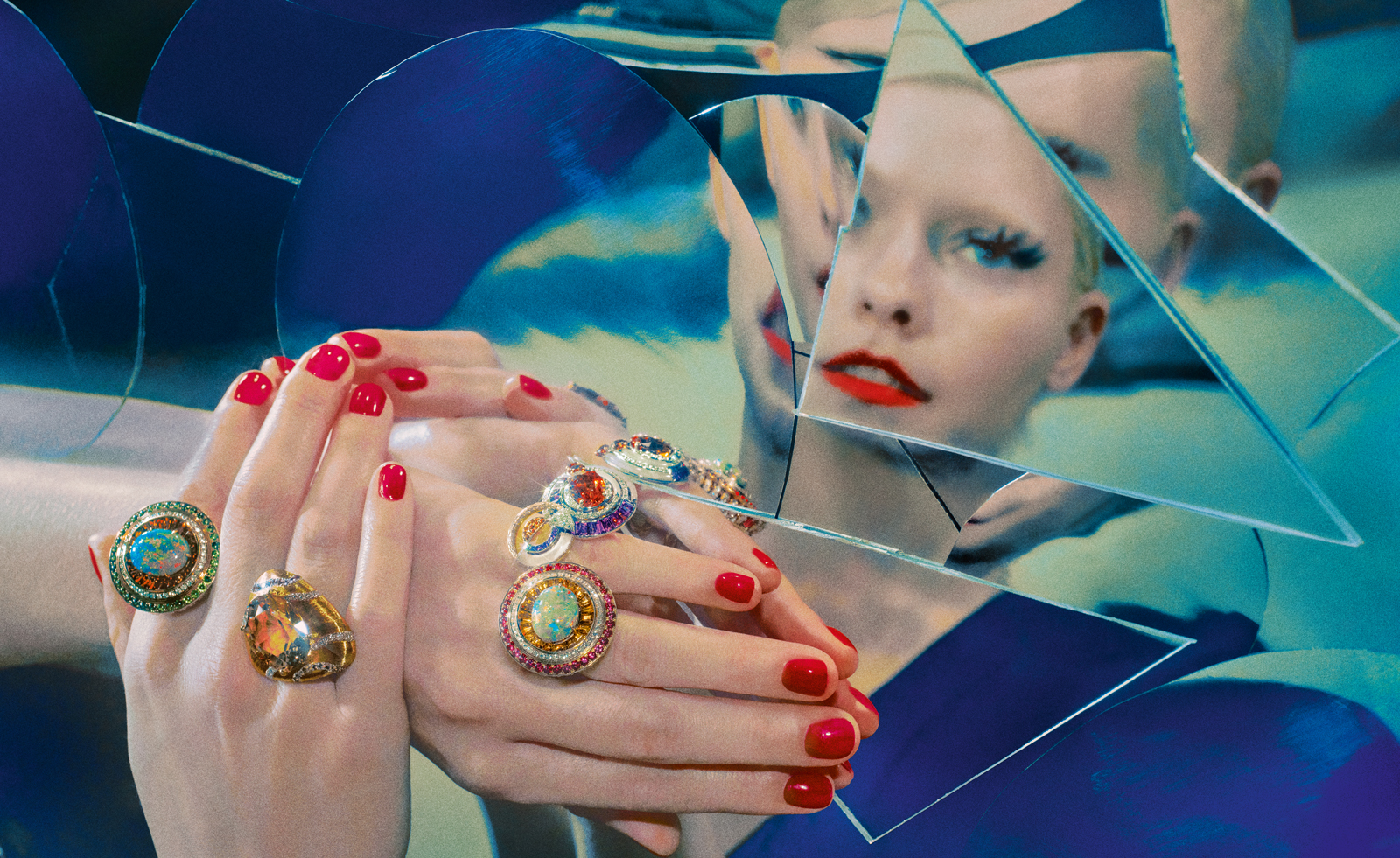 Chaumet’s new book celebrates its most memorable collaborations with photographers
Chaumet’s new book celebrates its most memorable collaborations with photographers'Chaumet: Photographers’ Gaze' unites jewellery editorials and campaigns captured by major photographers. Co-author Carol Woolton tells us of the ‘addictive' Chaumet archive
-
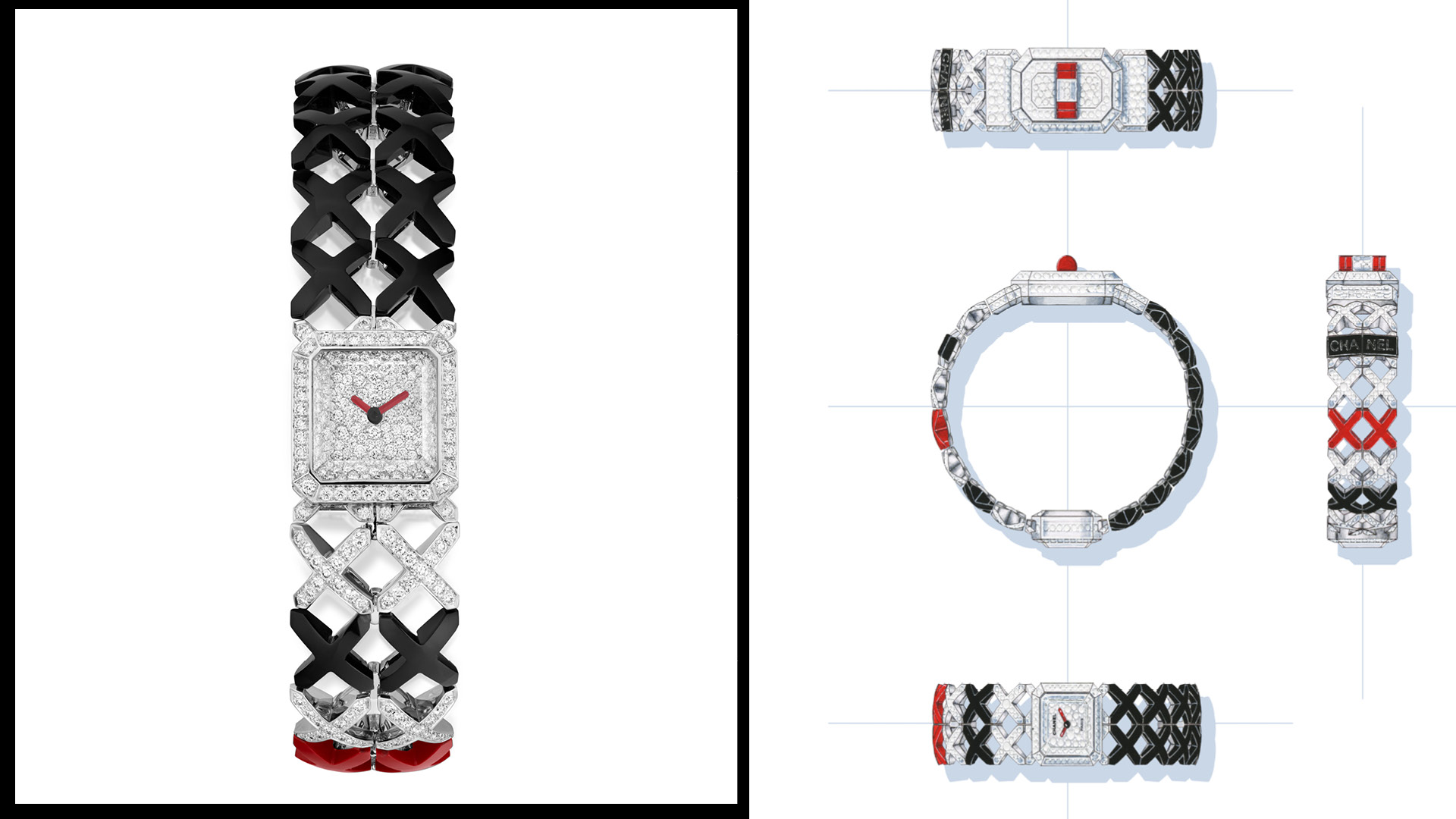 Chaumet, Cartier and Chanel up their high jewellery watch game for 2024
Chaumet, Cartier and Chanel up their high jewellery watch game for 2024In 2024's high jewellery watch designs, performance tech and centuries-old techniques combine to brilliant effect
-
 High jewellery with dazzling effects
High jewellery with dazzling effectsStand-out gems dazzle against a backdrop of red and black in our high jewellery shoot
-
 Paris 2024 and Chaumet unveil Olympic and Paralympic medals
Paris 2024 and Chaumet unveil Olympic and Paralympic medalsThe Paris 2024 Olympic and Paralympic medals designed by Chaumet are not just emblems of champions but are storytelling jewellery
-
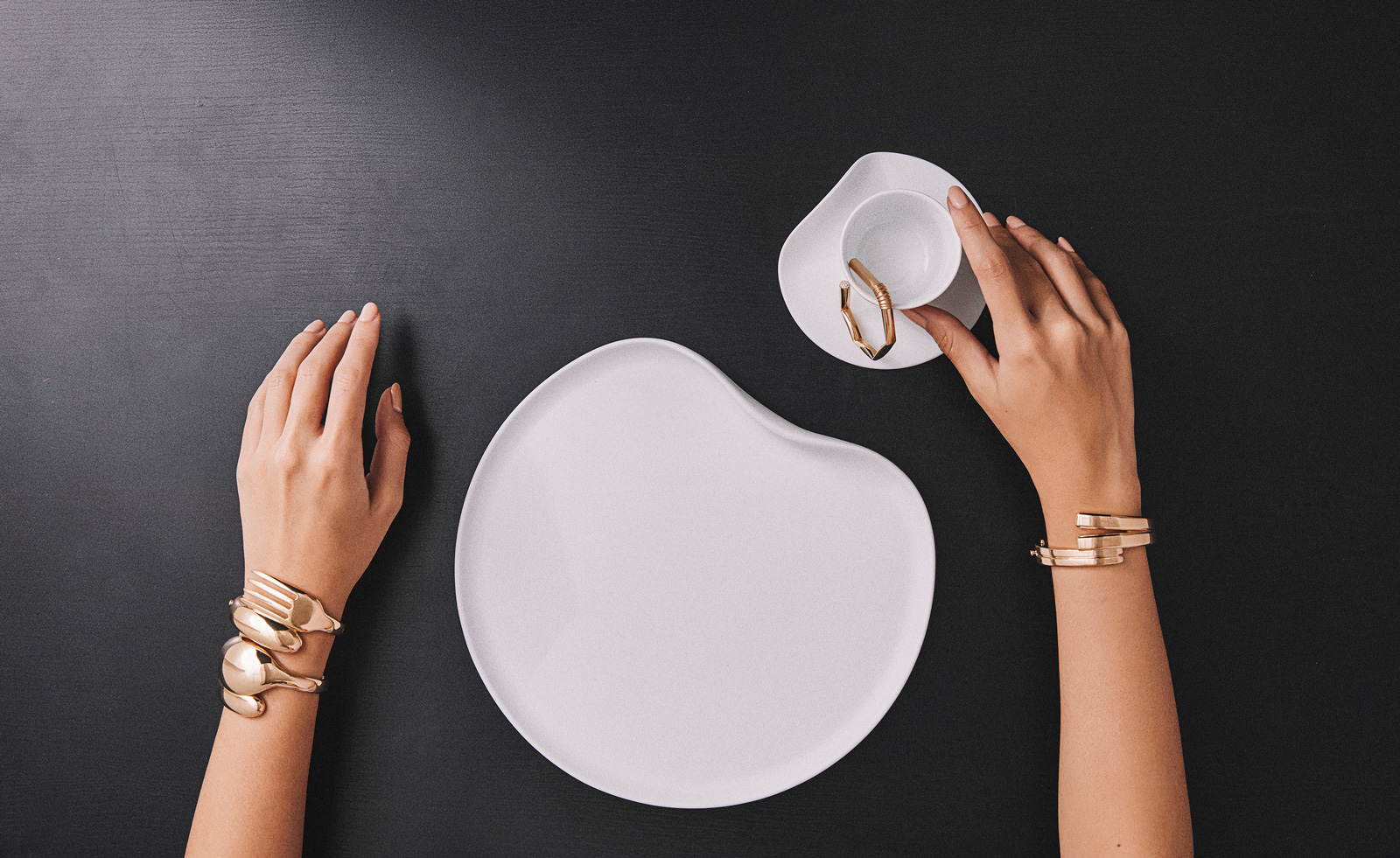 Year in review: top 10 watch and jewellery stories of 2023, as picked by Wallpaper’s Hannah Silver
Year in review: top 10 watch and jewellery stories of 2023, as picked by Wallpaper’s Hannah SilverSilver’s top 10 watch and jewellery stories of 2023 span cool horological collaborations, sculptural forms, and cutlery as bracelets
-
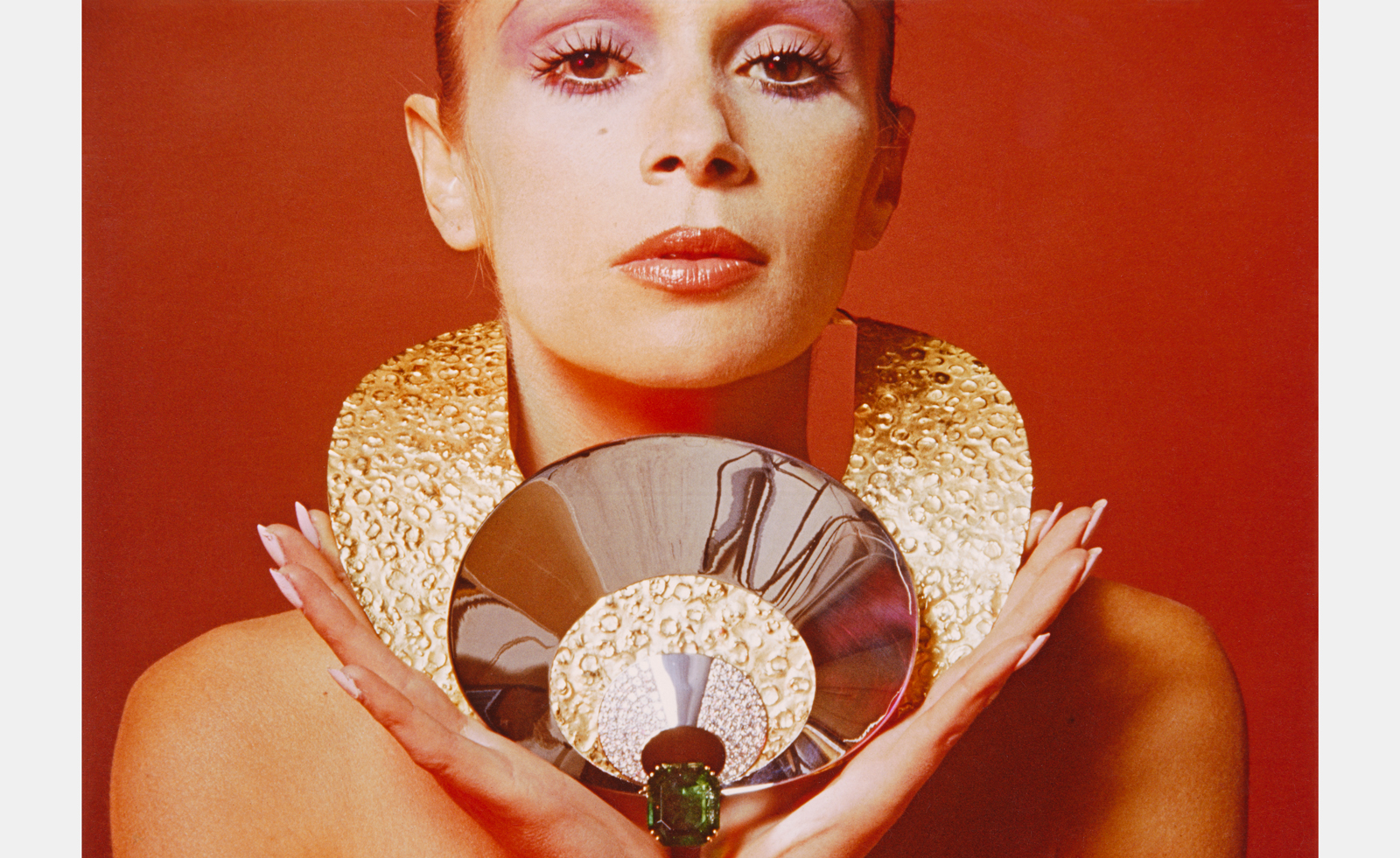 Chaumet exhibition celebrates the golden age of jewellery design in Paris
Chaumet exhibition celebrates the golden age of jewellery design in ParisA Chaumet exhibition, ‘Un Âge d’Or’, in Place Vendôme, puts jewellery designs from 1965 – 1985 in the spotlight
-
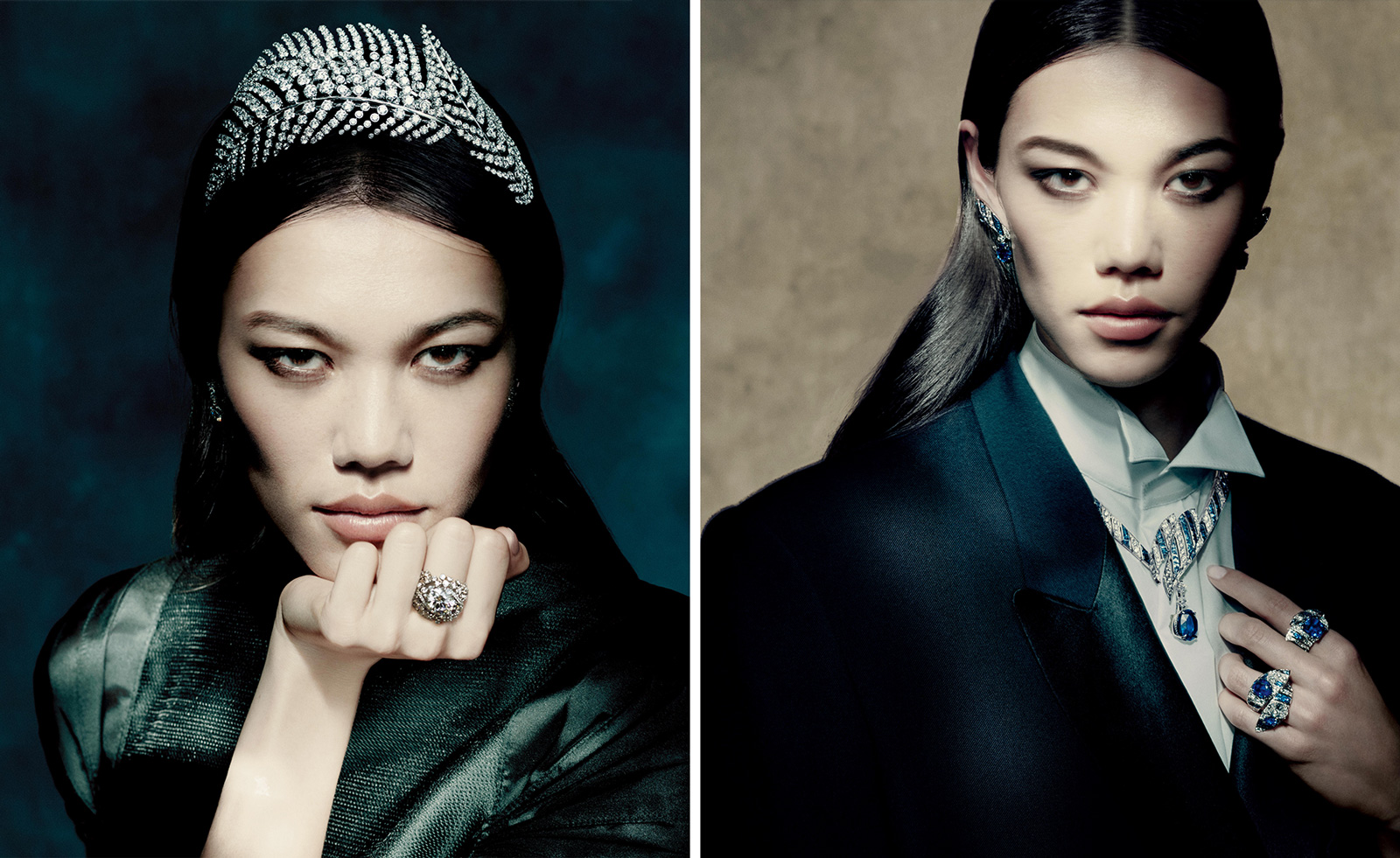 Chaumet’s high jewellery nods to naturalistic traditions
Chaumet’s high jewellery nods to naturalistic traditionsChaumet presents its new high jewellery collection in four chapters
-
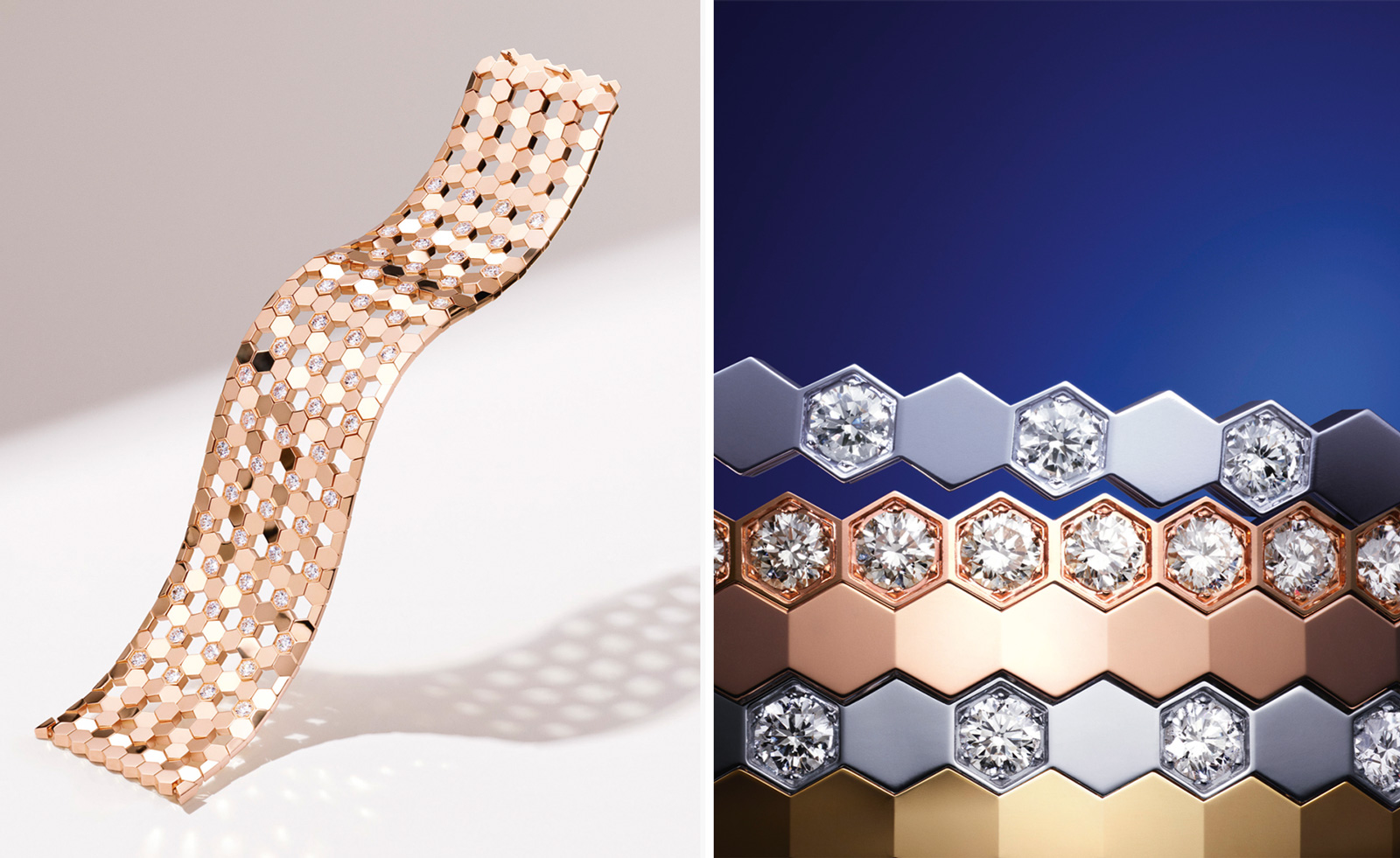 Bee my love: Chaumet draws honeycombs in fluid gold and diamonds
Bee my love: Chaumet draws honeycombs in fluid gold and diamondsChaumet’s new additions to the ‘Bee My Love’ jewellery collection nod to the jewellery maison’s heritage